 |
by Zeyi Yang on (#61VHD)
When Liu Yang started his current job, he found it hard to go back to driving his own car. “I instinctively went for the passenger seat. Or when I was driving, I would expect the car to brake by itself,” says the 33-year-old Beijing native, who joined the Chinese tech giant Baidu in January 2021…
|
MIT Technology Review
| Link | https://www.technologyreview.com/ |
| Feed | https://www.technologyreview.com/stories.rss |
| Updated | 2026-01-08 10:17 |
 |
by Rhiannon Williams on (#61TCQ)
This is today’s edition of The Download, our weekday newsletter that provides a daily dose of what’s going on in the world of technology. We’re starting to understand the mysterious surge of hepatitis in children The news: Hundreds of young children around the world have developed severe cases of hepatitis with no obvious cause, leaving doctors baffled.…
|
 |
by Patrick Howell O'Neill on (#61TAW)
There have been so many recent multimillion-dollar cryptocurrency thefts that it’s easy to lose track. Organized crime, bad cybersecurity, financially motivated spies, and colorful criminals of all kinds have made so many headlines that even huge heists can go mostly unnoticed by the public. But sometimes the government is able to get it back. Last…
|
 |
by Jessica Hamzelou on (#61SNT)
Hundreds of young children around the world have developed severe cases of hepatitis with no obvious cause, leaving doctors baffled. But two new studies reveal the potential culprits: a combination of genetic factors, lockdowns, and at least two viruses working together. Doctors first noticed a strange cluster of hepatitis cases in young children in Scotland…
|
 |
by Rhiannon Williams on (#61S9H)
This is today’s edition of The Download, our weekday newsletter that provides a daily dose of what’s going on in the world of technology. Wastewater could help us more accurately detect monkeypox The news: Last month, Stanford’s Sewer Coronavirus Alert Network, or SCAN, added monkeypox to the suite of viruses it checks wastewater for daily. Since then,…
|
 |
by Hana Kiros on (#61QG9)
Last month, Stanford’s Sewer Coronavirus Alert Network, or SCAN, added monkeypox to the suite of viruses it checks wastewater for daily. Since then, monkeypox has been detected in 10 of the 11 sewer systems that SCAN tests, including those in Sacramento, Palo Alto, and several other cities in California’s Bay Area. As of July 21,…
|
by Charlotte Jee on (#61PD7)
This is today’s edition of The Download, our weekday newsletter that provides a daily dose of what’s going on in the world of technology. Chinese gamers are using a Steam wallpaper app to get porn past the censors If you have been on Steam, the world’s largest PC gaming platform, you might have noticed an anomaly on…
 |
by Zeyi Yang on (#61N7V)
If you have been on Steam, the world’s largest PC gaming platform, you might have noticed an anomaly on the chart of the top 20 most popular apps: Wallpaper Engine. The software is pretty cool—it lets you download animated and interactive wallpapers for your machine’s monitor—but it’s hard to explain why an obscure wallpaper app…
|
by Charlotte Jee on (#61N3A)
This is today’s edition of The Download, our weekday newsletter that provides a daily dose of what’s going on in the world of technology. Do these heatwaves mean climate change is happening faster than expected? Blistering heat waves have smashed temperature records around the globe this summer, scorching crops, knocking out power, fueling wildfires, buckling roads and…
 |
by Baidu on (#61N1K)
When one of China’s biggest celebrities, Simon Gong—also known as Gong Jun—released a new music video in June 2022, it quickly attracted 15 million views on the country’s Twitter-like microblogging site Weibo. But the event also stood out for a different reason—one that only eagle-eyed fans might have noticed. The singer in the video was not…
|
 |
by James Temple on (#61MWA)
Millions of people are now experiencing the effects of climate change firsthand. Blistering heat waves have smashed temperature records around the globe this summer, scorching crops, knocking out power, fueling wildfires, buckling roads and runways, and likely killing thousands across Europe alone. The dizzyingly quick shift from an abstract threat to an era of tumbling…
|
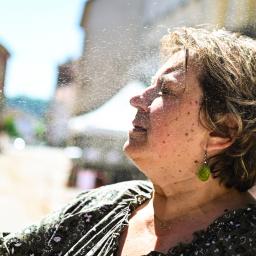 |
by Casey Crownhart on (#61M5G)
Europe is sweltering in record-breaking temperatures this week, and across the continent, people are largely trying to cope without air conditioning. Fewer than 10% of households in Europe are air-conditioned. But as temperatures rise, that figure is set to climb. Rising AC use may present new challenges, as most systems are inefficient and produce emissions…
|
 |
by Will Douglas Heaven on (#61M5H)
OpenAI will now sell its image-making program DALL-E 2 to the million people on its waiting list, MIT Technology Review can reveal. Around 100,000 people have played with DALL-E 2 since its invite-only launch in April. Today, the San Francisco–based company is opening the gates to 10 times as many as it turns the AI…
|
by MIT Technology Review Insights on (#61M0H)
Cybersecurity professionals are constantly looking for new and innovative ways to stay one step ahead of attackers. Yet in the first quarter of 2022 alone, there were 404 publicly reported data breaches in the U.S.—a 14% increase compared to the first quarter of 2021, according to the Identity Theft Resource Center. Of particular concern is…
by Charlotte Jee on (#61KRA)
This is today’s edition of The Download, our weekday newsletter that provides a daily dose of what’s going on in the world of technology. The weed influencer and the scientist feuding over why some stoners incessantly puke Alice Moon couldn’t stop throwing up. She had made a name for herself as an online cannabis influencer, but after…
 |
by Amanda Chicago Lewis on (#61KMH)
Alice Moon couldn’t stop throwing up. She had made a name for herself as an online cannabis influencer, but after a weed-infused dinner in a Malibu home in 2018, she spent more than two weeks constantly puking—unable to keep down food or water, going back and forth to urgent care for IVs, and at one…
|
by Charlotte Jee on (#61JE7)
This is today’s edition of The Download, our weekday newsletter that provides a daily dose of what’s going on in the world of technology. Sony’s racing AI destroyed its human competitors by being nice (and fast) “Wait, what? How?” Emily Jones wasn’t used to being left behind. A top sim-racing driver with multiple wins to her name,…
 |
by Will Douglas Heaven on (#61JCA)
“Wait, what? How?” Emily Jones wasn’t used to being left behind. A top sim-racing driver with multiple wins to her name, Jones jerked the steering wheel in the e-sports rig, eyes fixed on the screen in front of her: “I’m pushing way too hard to keep up— How does it do that?” Her staccato commentary…
|
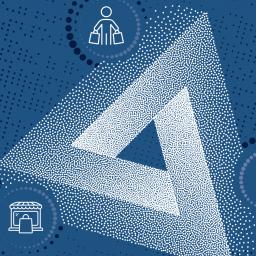 |
by Francesca Fanshawe on (#61J8M)
If digital transformation was a strategic business priority in the pre-2020 era, the pandemic propelled it to an existential imperative. Consumers witnessed the results of this enforced experiment in myriad ways. Their favorite clothing brand launched virtual try-on services. Their doctor became accessible via telehealth appointments. Even their local government—not an entity typically associated with…
|
by Charlotte Jee on (#61H53)
This is today’s edition of The Download, our weekday newsletter that provides a daily dose of what’s going on in the world of technology. A million-word novel got censored before it was even shared. Now Chinese users want answers. Imagine you are working on your novel on your home computer. It’s nearly finished; you have already written…
 |
by Melissa Heikkilä on (#61H0D)
The robot dog is waving its legs in the air like an exasperated beetle. After 10 minutes of struggling, it manages to roll over to its front. Half an hour in, the robot is taking its first clumsy steps, like a newborn calf. But after one hour, the robot is strutting around the lab with…
|
 |
by Zeyi Yang on (#61F0K)
Imagine you are working on your novel on your home computer. It’s nearly finished; you have already written approximately one million words. All of a sudden, the online word processing software tells you that you can no longer open the draft because it contains illegal information. Within an instant, all your words are lost. This…
|
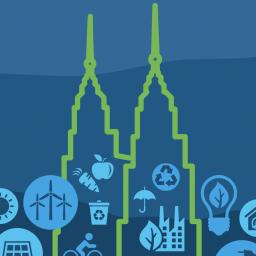 |
by Francesca Fanshawe on (#61F0M)
“We’re dealing with a crisis here, folks.” The warning from John Kerry, the US president’s top climate envoy, to global leaders at the World Economic Forum in Davos in May 2022 couldn’t have been clearer. And Asia Pacific—home to 60% of the global population and responsible for more than half of the world’s greenhouse gas…
|
by Charlotte Jee on (#61EPM)
This is today’s edition of The Download, our weekday newsletter that provides a daily dose of what’s going on in the world of technology. The book ban movement has a chilling new tactic: harassing teachers online Nancy Vera was awakened suddenly at midnight on July 12 by the sound of a single gunshot, the bullet ricocheting off…
 |
by Tanya Basu on (#61EH2)
Nancy Vera was awakened suddenly at midnight on July 12 by the sound of a single gunshot fired into her yard. She looked at a security camera just in time to see a truck speed away. Vera was shocked but not surprised. The president of the Corpus Christi, Texas, branch of the American Federation of…
|
by Jenn Webb on (#61E4P)
Thank you for joining us on “The cloud hub: From cloud chaos to clarity.” Watch Himanshu Arora, global business head, low code/no code, automation, and integration practice at Infosys, speak with Avrohom Gottheil, founder of AsktheCEO Media, about how low code/no code is set to change the innovation agenda for most organizations. Click here to…
by Jenn Webb on (#61E4Q)
Thank you for joining us on “The cloud hub: From cloud chaos to clarity.” Vishal Salvi, CISO and head of cybersecurity at Infosys, and Ameya Kapnadak, chief growth officer and head of consulting at Interbrand, discuss with Bill Mew, digital ethics campaigner and CEO of CrisisTeam.co.uk, the steps that brands must take to safeguard themselves…
by Jenn Webb on (#61E2F)
Thank you for joining us on “The cloud hub: From cloud chaos to clarity.” Watch Davesh Sharma, senior principal portfolio leader at BP, share the company’s automation journey with Joseph Alenchery, vice president at Infosys. He discusses how BP’s automation CoE has delivered value and kept pace with shifts in the technology landscape. Click here…
by Jenn Webb on (#61E2G)
Thank you for joining us on “The cloud hub: From cloud chaos to clarity.” As organizations across the globe realize the value of artificial intelligence, there is also a growing need to acknowledge the roadblocks and make efforts to remedy them to maximize the impact of the technology. AI experts share their thoughts. Click here…
by Jenn Webb on (#61E2H)
Thank you for joining us on “The cloud hub: From cloud chaos to clarity.” Read this paper by the Infosys Knowledge Institute that highlights the new digital technologies, how they work, and why policymakers need to understand them. Click here to continue.
by Jenn Webb on (#61E2J)
Thank you for joining us on “The cloud hub: From cloud chaos to clarity.” Theodora Lau, founder of Unconventional Ventures, shares her view on how organizations need to move beyond leveraging data to drive efficiency and focus on delivering unique value for their customers. Click here to continue.
by Jenn Webb on (#61DYB)
Thank you for joining us on “The cloud hub: From cloud chaos to clarity.” Fumbi Chima, chief information officer at BECU discusses BECU’s early stages of a greenfield migration to cloud computing. The discussion covers digital transformation, fintechs, and employee experience. Click here to continue.
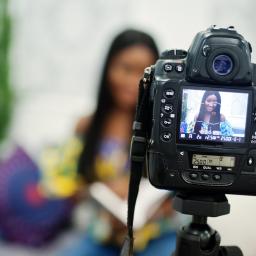 |
by Abby Ohlheiser on (#61DNA)
Last summer, a TikTok creator named Ziggi Tyler posted a video calling out a disturbing problem he found in the app’s Creator Marketplace, a tool that matches creators with brands looking to pay for sponsored content. Tyler said he was unable to enter phrases like “Black Lives Matter” and “supporting Black excellence” into his Marketplace…
|
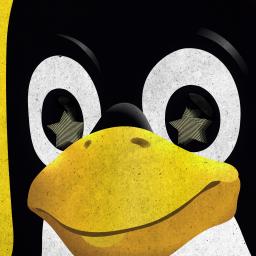 |
by Rhiannon Williams on (#61DD1)
This is today’s edition of The Download, our weekday newsletter that provides a daily dose of what’s going on in the world of technology. The US military wants to understand the most important software on Earth It’s not much of an exaggeration to say that the whole world is built on top of the Linux kernel—although most…
|
 |
by Patrick Howell O'Neill on (#61D8Y)
It’s not much of an exaggeration to say that the whole world is built on top of the Linux kernel—although most people have never heard of it. It is one of the very first programs that load when most computers power up. It enables the hardware running the machine to interact with the software, governs…
|
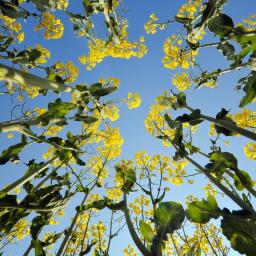 |
by Casey Crownhart on (#61D8Z)
Some of the world’s most productive agricultural regions from India to the US Midwest have already broken temperature records this year, with potentially worrying implications for food supplies. Hot days and nights can make drought conditions worse, and that’s not the only way rising temperatures can hurt crops. In extreme conditions, the molecular machinery inside…
|
 |
by Rhiannon Williams on (#61C2M)
This is today’s edition of The Download, our weekday newsletter that provides a daily dose of what’s going on in the world of technology. The James Webb Space Telescope just delivered some incredible new images of the universe NASA has released the second set of images taken by the James Webb Space Telescope, revealing galaxies, planets, and…
|
 |
by Jonathan O'Callaghan on (#61B7Q)
The first images taken by the James Webb Space Telescope (JWST) have been released by NASA, following an initial reveal by US President Joe Biden. JWST’s stunning first science image, which was unveiled by Biden on Monday, is a deep view into the universe showing thousands of galaxies, showcasing the immense power of the $10…
|
 |
by Rhiannon Williams on (#61ANW)
This is today’s edition of The Download, our weekday newsletter that provides a daily dose of what’s going on in the world of technology. Edits to a cholesterol gene could stop the biggest killer on earth The news: A volunteer in New Zealand has become the first person to undergo DNA editing in order to lower their…
|
 |
by Antonio Regalado on (#61AKM)
A volunteer in New Zealand has become the first person to undergo DNA editing in order to lower their blood cholesterol, a step that may foreshadow wide use of the technology to prevent heart attacks. The experiment, part of a clinical trial by the US biotechnology company Verve Therapeutics, involved injecting a version of the…
|
 |
by Melissa Heikkilä on (#61AFG)
PARIS — This is as close as you can get to a rock concert in AI research. Inside the supercomputing center of the French National Center for Scientific Research, on the outskirts of Paris, rows and rows of what look like black fridges hum at a deafening 100 decibels. They form part of a supercomputer…
|
 |
by Sarah Simon on (#61AFF)
Amazon, Hello Fresh, Stitch Fix. Click a button, and it’s there in three to five days—perhaps even one. Packages, packages, and more packages—goods from all over the world, delivered after just a couple of clicks. But this height of consumer convenience has been complicating urban life for years, giving rise to increased theft and traffic,…
|
 |
by Jonathan O'Callaghan on (#61A39)
US President Joe Biden has revealed the first image taken by the James Webb Space Telescope (JWST), showcasing some of the most distant galaxies ever seen. Announced today from the White House with NASA, the image shows a small portion of the sky—comparable to the span of a grain of sand held at arm’s length—enhanced…
|
 |
by MIT Technology Review Insights on (#619MX)
As companies struggle to process, store, and leverage ever-increasing amounts of structured and unstructured data, data governance is becoming a critical part of every company’s data management. Governance not only helps a company understand and use its data, but it ensures everyone has access to the data they need, when they need it. “Data doesn’t…
|
 |
by Rhiannon Williams on (#619AS)
This is today’s edition of The Download, our weekday newsletter that provides a daily dose of what’s going on in the world of technology. Doctors using AI catch breast cancer more often than either does alone The news: Radiologists assisted by an AI diagnose breast cancer more successfully than when they work alone, according to new research.…
|
 |
by Hana Kiros on (#6195N)
Radiologists assisted by an AI screen for breast cancer more successfully than they do when they work alone, according to new research. That same AI also produces more accurate results in the hands of a radiologist than it does when operating solo. The large-scale study, published this month in The Lancet Digital Health, is the…
|
 |
by Rhiannon Williams on (#616Z9)
This is today’s edition of The Download, our weekday newsletter that provides a daily dose of what’s going on in the world of technology. The secret police: A private security group regularly sent Minnesota police misinformation about protestors When US marshals shot and killed a 32-year-old Black man named Winston Boogie Smith Jr. in a parking garage…
|
 |
by David Silverberg on (#616Q6)
Khatab Alrawhani, a Yemen-born journalist and activist, thought he could escape the persecution that journalists were experiencing in the Middle East when he left the region. But it followed him. While studying in Washington, DC, in 2015, he published posts denouncing the Houthi coup, in which an armed faction overthrew the Yemeni government. His father…
|
 |
by Tate Ryan-Mosley, Sam Richards on (#615RS)
When US marshals shot and killed a 32-year-old Black man named Winston Boogie Smith Jr. in a parking garage in Minneapolis’s Uptown neighborhood on June 3, 2021, the city was already in a full-blown policing crisis. Around 300 officers had quit over the previous two years amid near-constant protests and public criticism in the wake…
|
 |
by Rhiannon Williams on (#615HX)
This is today’s edition of The Download, our weekday newsletter that provides a daily dose of what’s going on in the world of technology. Why business is booming for military AI startups Exactly two weeks after Russia invaded Ukraine in February, Alexander Karp, the CEO of data analytics company Palantir, made his pitch to European leaders. With…
|